MFAH + Houston Zoo Crossover: A Tale of Two Curators November 8, 2019
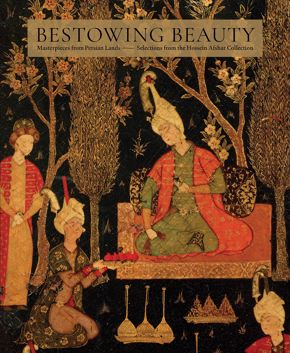
Bestowing Beauty: Masterpieces from Persian Lands―Selections from the Hossein Afshar Collection
India, signed Muhammad Husayn al-Katib, Folio of Calligraphy: Golden Pheasant (detail), late 16th–early 17th century, ink, opaque watercolor, and gold on paper, the Hossein Afshar Collection at the Museum of Fine Arts, Houston.
Golden Pheasant, Macaulay Library, Cornell University.
Iran, signed ’Ali-Quli, Common Green Magpie, 1746–47, ink, opaque watercolor, and gold on paper, the Hossein Afshar Collection at the Museum of Fine Arts, Houston.
Common Green Magpie, Macaulay Library, Cornell University.
A new MFAH publication, Bestowing Beauty: Masterpieces from Persian Lands—Selections from the Hossein Afshar Collection, brings together the research of scholars who specialize in all aspects of Persian art, along with one surprising contributor: Chris Holmes, assistant curator of birds at the Houston Zoo.
We caught up with him—along with Aimée Froom, our curator of art of the Islamic worlds and editor of Bestowing Beauty—to find out more about this collaboration.
How did the two of you connect?
Aimée Froom: I was curious to learn more about the birds depicted in our miniature paintings. The Houston Zoo is home to the fourth-largest collection of birds in a North American zoo, so we reached out, and Chris Holmes responded enthusiastically. We started emailing and then visited each other’s collections. Now, we meet for lunch to stay in touch about our projects.
What’s the process for identifying a bird in a painting?
Chris Holmes: There is an amazing set of books called Handbook of the Birds of the World that documents all the species of birds, estimated at 10,000.
I would first identify the bird’s taxonomic family based mainly on its body shape, then go through that taxonomic order in the handbook and compare the painted bird to the illustrations. When I found a bird that was similar, I would check the native range of that species and confirm that it fits with the place where the painting was made.
Aimée, how have Chris’s bird identifications changed the way you look at these works of art?
AF: Chris’s identifications help bring these painted birds to life. I no longer look at them as 17th-century examples of Persian or Indian painting but as live birds that captured the creative attention of master court artists. Chris always sends along helpful photos of actual birds and their flight range. This was especially useful in one instance: I confirmed that a bird in one Indian painting—a golden pheasant—was not native to India but to China, and was likely offered as a diplomatic gift.
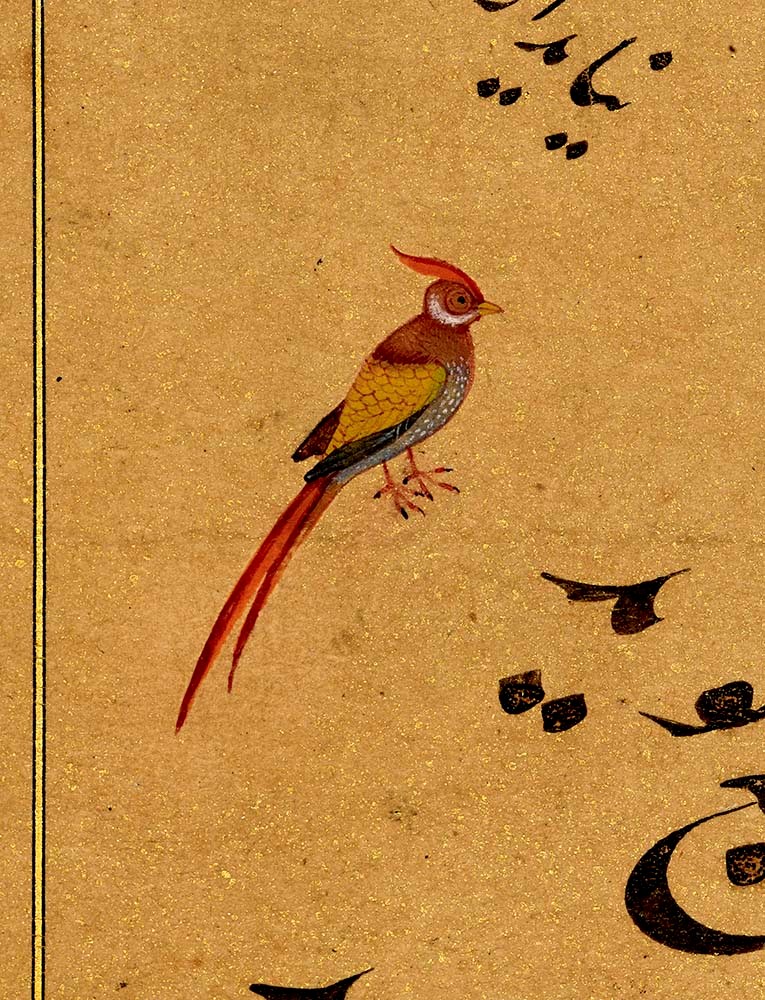
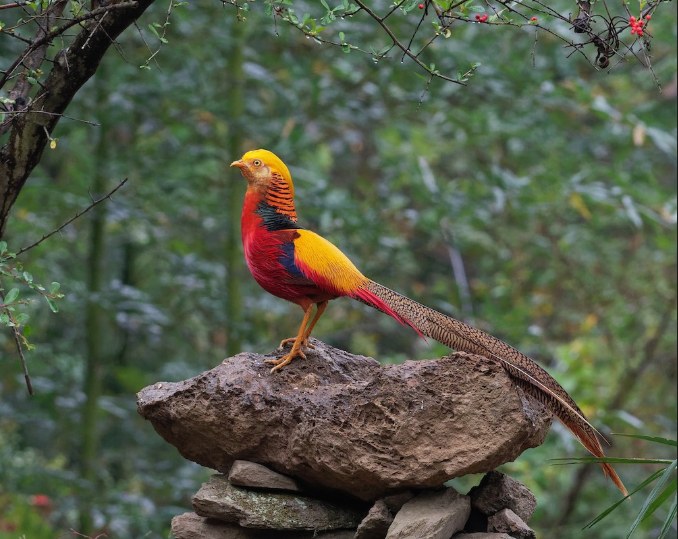
Also, I will never look the same way at the common green magpie featured in one elegant Persian painting after I learned from Chris that these birds are actually quite raucous and antisocial.
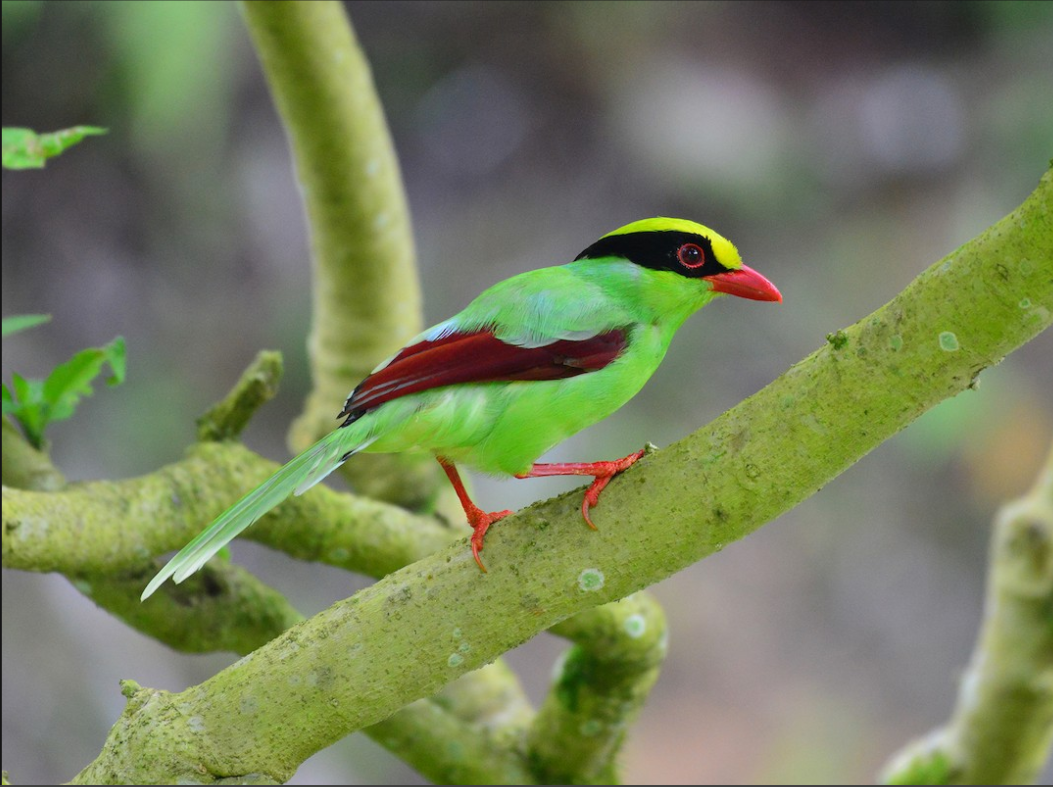
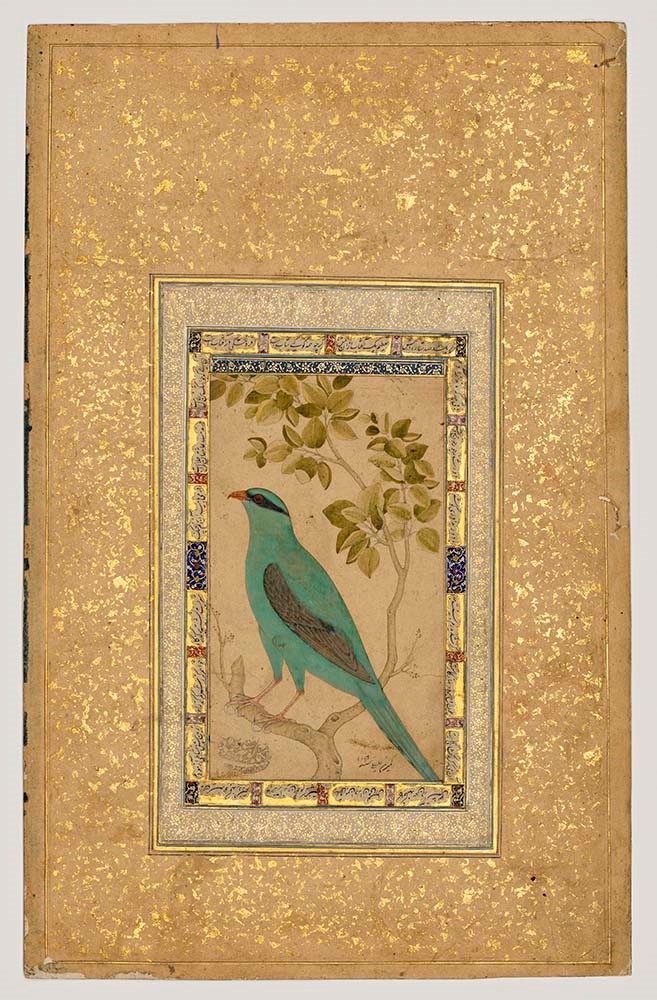
Were there any surprises?
CH: Yes! Since the artists did not have photos, it was amazing to see how they depicted the birds. These paintings are based on seeing a bird in life. When a bird flies by, your eye usually focuses on facial markings. Things like tails and wing shapes tend to appear blurry, so determining the proportions of a bird can be challenging.
Even though you work in very different areas, you both have “curator” in your title. What do your jobs have in common?
CH: We both study and care for collections, making sure they are well documented for the future. For a living collection, you have to factor in the genetics of the population to ensure that you are keeping the species the healthiest it can be for the next generation of zoo professionals. We both have to take into account the origins and cultural significance of our different charges.
AF: We are working toward similar goals. Chris’s curatorial duties have included bottle feedings for baby parrots every two hours, which will never be part of a museum curator’s job! But as he mentions, we are both caretakers who preserve, study, and exhibit our collections of birds and art for the public.
► Learn More
The book Bestowing Beauty: Masterpieces from Persian Lands—Selections from the Hossein Afshar Collection is available through the MFA Shop (713.639.7360) and the Museum’s Hirsch Library (713.639.7325).





